Dog Health Tips: Daily Routines for a Healthy Life | Pupford
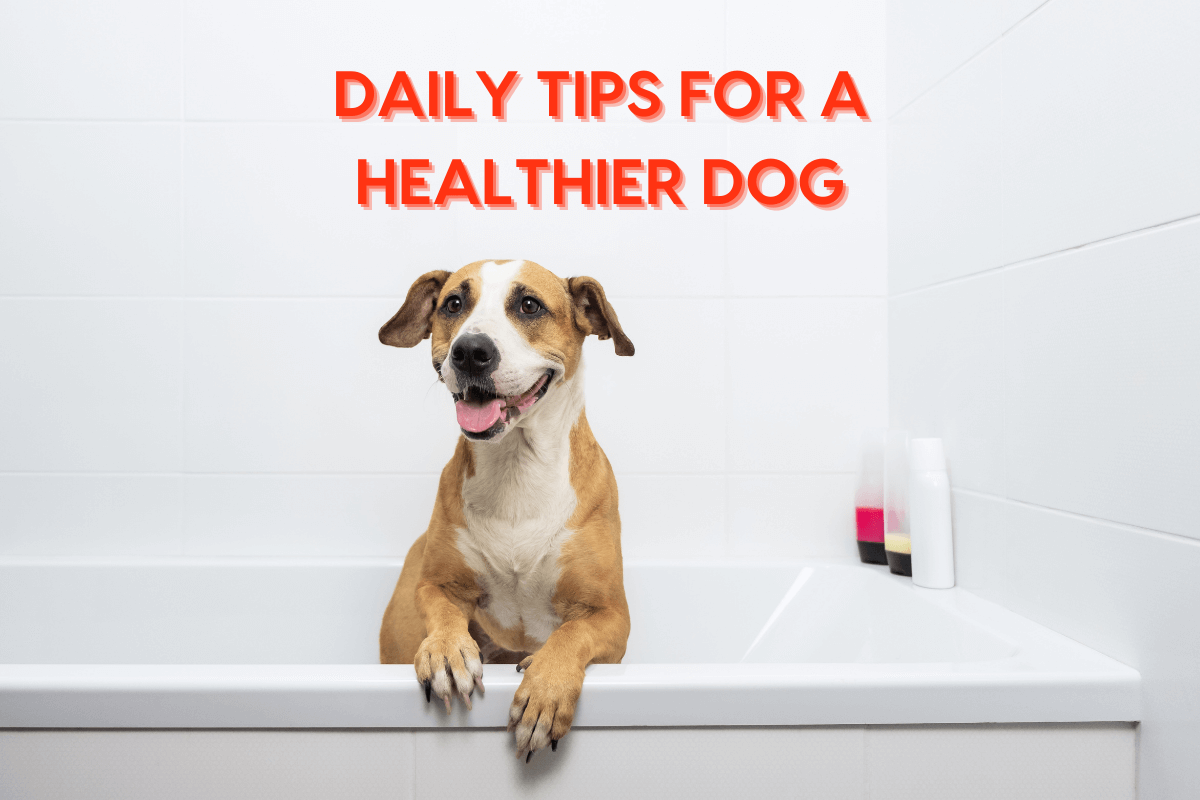
Taking care of a dog requires a lot of commitment (VERY worthwhile commitment, to be clear!). There are some parts to our doggo’s health that often go overlooked. In this guide, we’ll be covering the less talked about, but equally important, aspects of your pup’s health with some easy-to-follow dog health tips!
This article will help you understand a whole variety of information about taking care of your pup!
Related Reading: Are Dogs' Mouths Cleaner Than Humans?
TABLE OF CONTENTS
- Establish a Schedule for Vet Visits
- How Often Should I Take My Dog to the Vet?
- How Much Does a Puppy’s First Vet Visit Cost?
- Do I Need Pet Insurance?
- How to Brush Dog’s Teeth
- How Often Should I Brush My Dog’s Teeth?
- What is the Best Dog Toothbrush?
- What is the Best Dog Toothpaste?
- How to Remove Plaque from Dog’s Teeth
- How to Clip Dog’s Nails
- How to Cut Your Dog's Nails Safely
- How to Clip Dog’s Nails When Dog is Scared of It
- Tips for Bathing Your Dog
- How Often Should You Wash Your Dog?
- How Often Should You Wash Your Puppy?
- At What Age Can You Bathe a Puppy?
- How Often Should I Groom my Dog?
- How Often Should I Brush My Dog?
🐶 Don't miss out, get access to the Dog First Aid Course part of Pupford Academy Plus. Get access here! 🐶
ESTABLISH A SCHEDULE FOR VET VISITS TO MONITOR YOUR DOG'S HEALTH
Just like with our own health, dogs need professionals to help diagnose, treat, and aid in preventing diseases and health problems. Finding a good vet near you is something you’ll want to do before you even get a dog. Using tools like Yelp and Google can help you find a vet who will care about your dog as much as you do!
Or, you can do it the old fashioned way and ask a friend!
Just like with a personal doctor, establishing a solid relationship and scheduled visits with a vet is the best way to keep your dog’s health in order. Sticking with one vet (unless you have issues with them, obviously) will help them better understand your dog and their changes in health over time.
Additional Reading: Learn what to do if your dog is scared of the vet.
HOW OFTEN SHOULD I TAKE MY DOG TO THE VET?
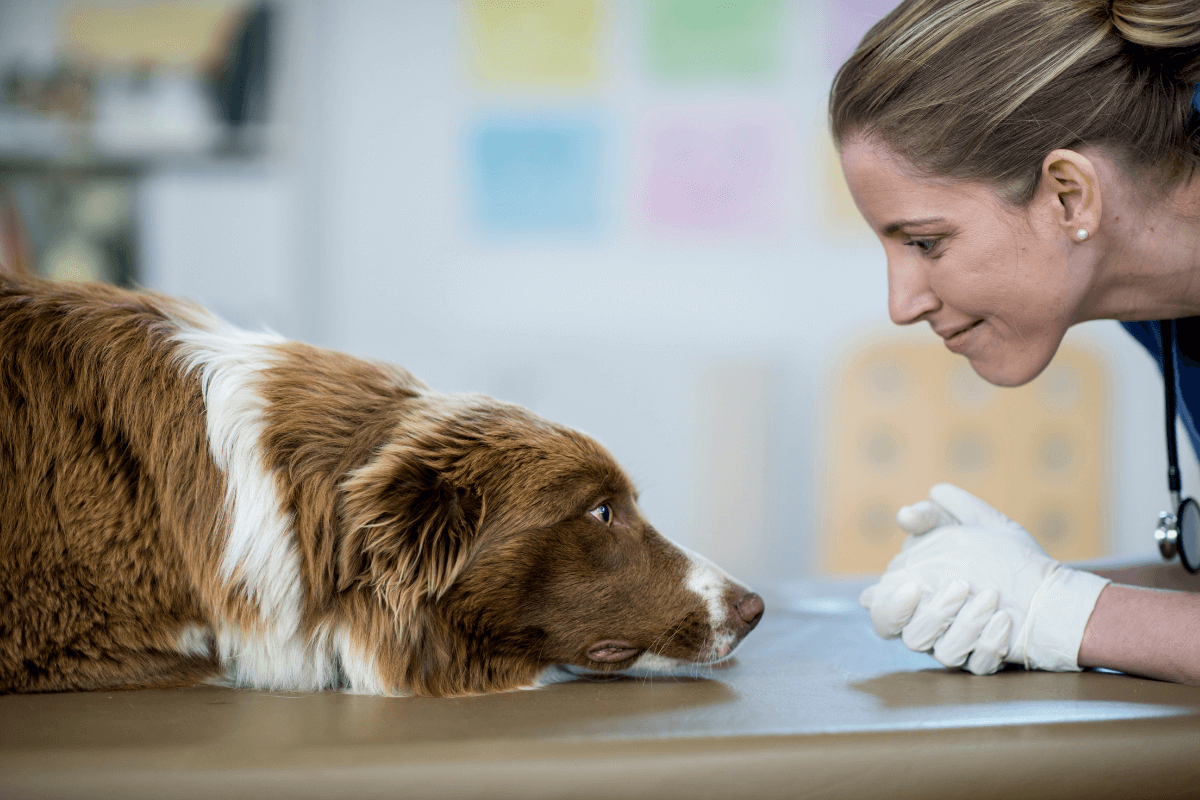
Outside of proper vet care, it's also a good idea to learn first aid basics and have a kit at home.
But, if you’re wondering how often you should take your dog to the vet, here is a quick reference with a more detailed look below.
- Puppies, every 4-6 weeks, especially in the first 6-9 months of their life
- Adults, at least once a year, and additionally as needed
- Senior Dogs, at least 2-3 times a year, and additionally as needed
When your doggo is still a puppy, they require more frequent vet visits to get the required shots, vaccinations, and check-ups. When your puppy is young, you can expect to visit the vet on a monthly basis, especially until all their vaccinations are finished off.
A good vet will help you keep track of that schedule.
As with any health-related schedule, it can vary depending on the overall health of your dog, their breed, and their specific needs. Again, it is best to consult with your vet, hopefully before you ever get a puppy, about what to expect in regards to vet visits.
Although vaccinations, spaying or neutering, and vet visits can seem costly and time-consuming, preventing diseases and health problems will save you money in the long run. Also, establishing a solid relationship between your pup and their vet will pay dividends in the long run.
PS- Check out 11 ways to entertain a dog after surgery here.
A healthy pup is a happy pup.
Adult dogs, ages 1-7 years (depending on breed), will require examinations from your vet about once a year. This annual exam allows your vet to examine your four-legged friend for any physical ailments or signs of abnormal behavior or health concerns - especially things you may not normally notice.
Senior dogs, roughly age 7 and up, will require examinations at least twice a year. Just like with humans, as dog’s bodies age they often start to incur new problems and pains. Staying ahead of those pains and problems will help your old doggo stay happy and healthy for more years to come.
Related Reading: 10 Signs a Dog is in Pain
During examinations your vet will look for, ask about, and assess some of the following areas for your dog:
- Diet
- Exercise
- Behavior & habits
- Bowel movements and patterns
- Weight management
- General health
- Physical exam
Since your dog can’t speak English (unfortunately), the vet should ask you a lot of questions to understand your pup’s overall health and well-being. Being as thorough and honest in your responses will help your vet make necessary and accurate recommendations for your floof’s health and happiness.
During the physical exam portion, your vet will typically check the following:
- How your dog walks and stands, which can be signs of potential joint or bone issues
- Coat and skin, checking for excessive oil, excessive dryness, abnormal hair loss, lumps, bumps, and other abnormalities
- Eyes checking for excessive tearing, discharge, lumps on eyelids, and other abnormalities
- Ears to look for discharge, hair loss, or any other potential problems
- Mouth and teeth to check for tartar build-up, broken teeth, ulcers in the mouth and other abnormalities
- Heart for abnormal heart rate, any murmurs or other heart issues
- Lymph nodes to check for sign of swelling or pain
- Legs for potential lameness, paw or toenail problems, nerve issues, and other potential concerns
- Abdomen to inspect things like kidneys, liver, spleen, stomach and other areas to ensure there is no pain or evidence of disease
- And more as your vet sees fit!
*The list above is just a general list of some things you might see, not a 100% checklist your vet must abide by.
It’s important to remember that our dogs can’t tell us what they feel, and even if they are in pain by nature they often mask or hide their feelings of pain. Keeping up with your vet visit schedule will help you detect health problems as early as possible and prevent future issues before they occur. We highly recommend sticking to a schedule so your pup stays in tip-top shape.
🐶 Don't miss out, get access to the Dog First Aid Course part of Pupford Academy Plus. Get access here! 🐶
HOW MUCH DOES A PUPPY'S FIRST VET VISIT COST?
Your first vet visit will vary depending on where you live, your dog, and the availability of vets in your area. Since it’s hard to nail down a specific cost for just your first visit, here is an estimate of veterinary costs for your puppy in the first year of its life.
- Heartworm tests and preventative care - $130
- Annual physical exam - $60
- Vaccinations - $270
- Flea and tick prevention - $175
- Dental cleaning (if done by a vet) - $300
- Fecal exam - $60
Again, those figures are purely an estimate and will likely vary depending on where you live and your dog’s specific health situation. So, for one year of puppy vet costs, you can expect to spend about $1000.
Related Reading – First Day with New Puppy Guide: 24 Hours & Beyond
DO I NEED PET INSURANCE?
For most people, having pet insurance is worth the peace of mind it gives. Just like with health insurance for humans, there are many different types of coverage which means a wide range of costs for pet insurance.
Some people opt for the simplest and cheapest route which often only covers accidents and injury. These plans can be as low as $5-10 per month depending on the health, breed, and age of your dog.
Other pet insurance plans are more comprehensive and can cover vet check-ups and other preventative health expenses. For a more detailed look at pet insurance, check out our blog about how to choose pet insurance here!
HOW TO BRUSH DOG'S TEETH
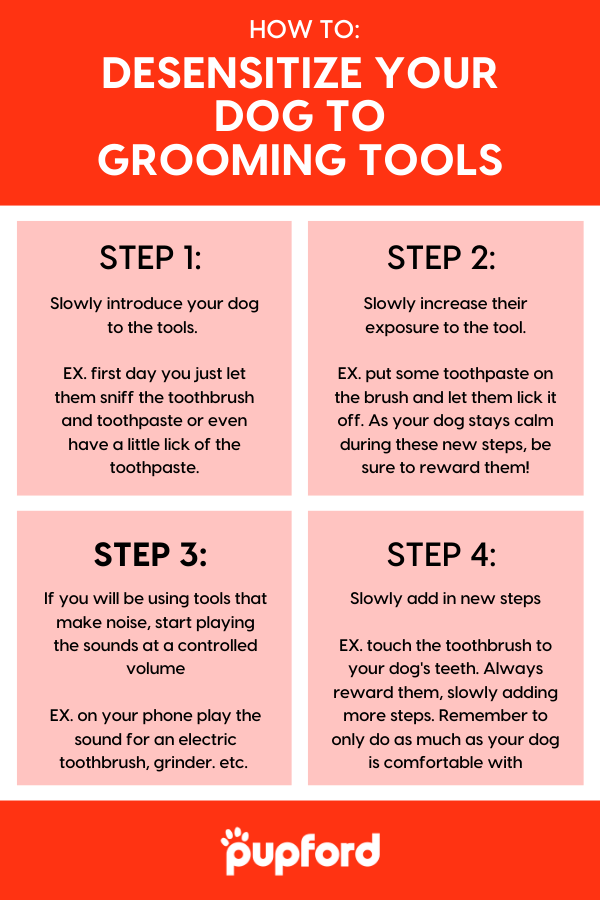
Brushing your dog’s teeth is just about as simple as brushing your own teeth, except it’s not your own mouth… and your dog is usually trying to lick the toothbrush constantly. So, it’s not the same at all. Whoops.
Okay, so it’s more like brushing a toddler’s teeth. At first, they might struggle and not want to do it, but over time they will be fine with it. The key to making them comfortable with teeth brushing is to introduce it to them slowly. For example, maybe the first day you just let them sniff the toothbrush and toothpaste or even have a little lick of the toothpaste.
The next day, you can slowly increase their "exposure" to the tooth brushing experience by just putting some toothpaste on the brush and then letting them lick it off. As your dog stays calm during these new steps, be sure to reward them! Think of these "prep" days as mini training sessions for your pup. Each day, just work up a little bit so that after a few days your dog will be comfortable with a full tooth brushing. The key is to help your pup feel comfortable with this new experience!
The key to brushing your dog’s teeth is to make sure you have the right toothbrush and toothpaste (we’ll cover more on that in a minute). Specifically, get a toothbrush that is sturdy enough for you to get into your pup’s mouth without the brush going flying.
With a pea-sized amount of dog-specific toothpaste (more for bigger dogs and less for smaller ones) try to brush all of your dog’s teeth for at least a couple seconds. Putting your dog into a "sit-stay" will help if they are trying to get away from toothbrush time. Focus on the back teeth as that’s often where plaque and other gunk ends up getting stuck.
With most dog toothpaste, you don’t need to worry about rinsing out their mouth or them swallowing it. My dogs actually love the taste of their toothpaste.
The key to oral hygiene for your dog is consistency. We’ll hit that in the next section.
Related Reading: How to Clean a Dog's Teeth
🐶 Don't miss out, get access to the Dog First Aid Course part of Pupford Academy Plus. Get access here! 🐶
HOW OFTEN SHOULD I BRUSH MY DOG'S TEETH?
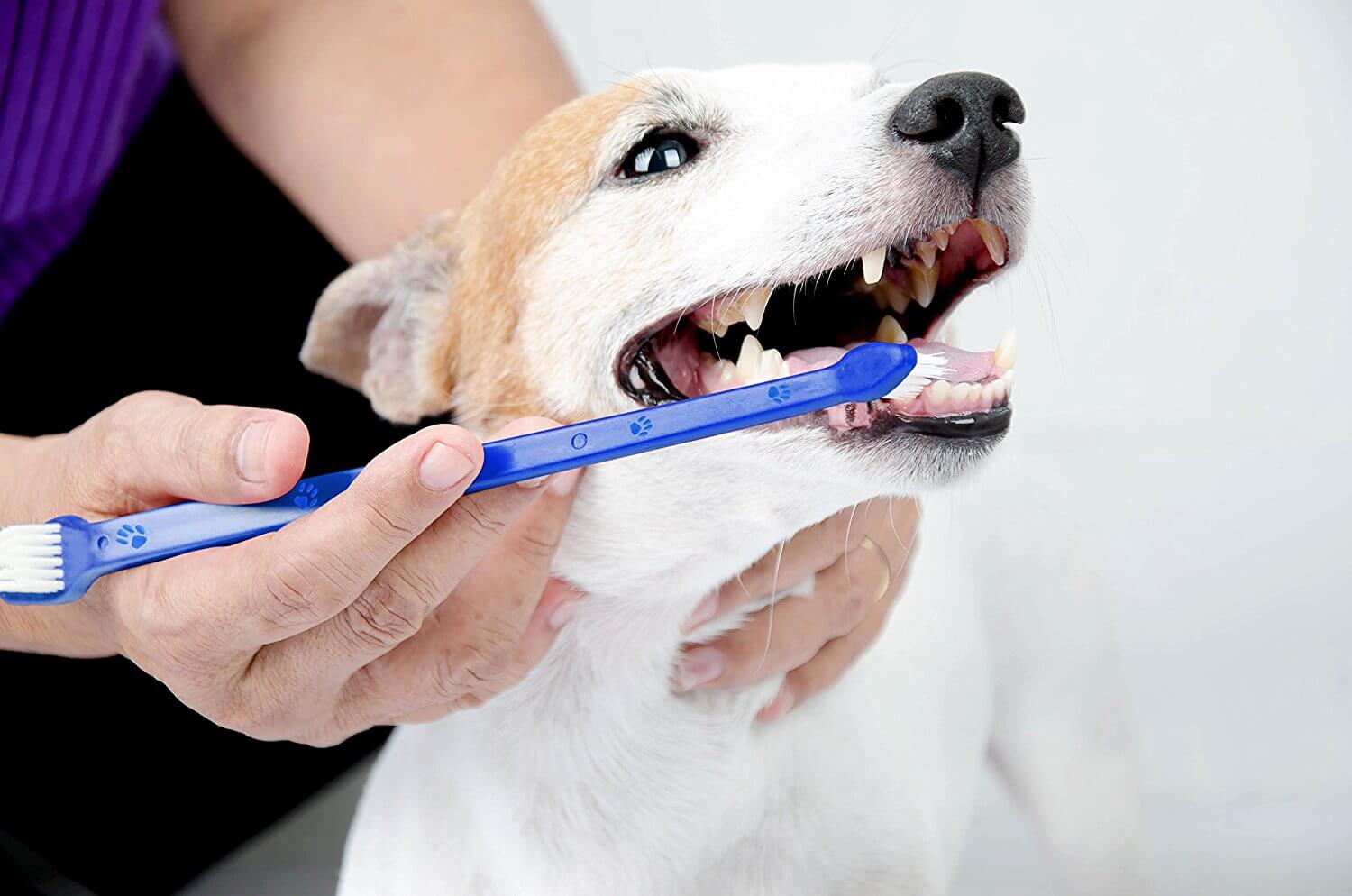
Let’s answer this one as simple as possible - at least once a day. If you can do it morning and night that’s great, but once a day should be plenty for most dogs.
I decided to set a consistent habit (still not perfect) of brushing my dog’s teeth every night before we go to bed. I put their brush and toothpaste in a place that I’ll see it before I go to bed.
Brushing your dog’s teeth every day is a simple and quick habit that can save you 1,000’s of dollars in the long run!
WHAT IS THE BEST DOG TOOTHBRUSH?
There are lots of options out there, but to find the best dog toothbrush you might need to try a few different ones to see which one works best for you and your dog.
I have tried a few different types. I’ve used the finger cover types, regular brushes, and even extra long double-sided toothbrushes.
Let’s see what most dog moms and dads are buying these days!
#1 Pupford's 8 ½ Long Double-Sided Toothbrush
I personally use this one on all of my dogs and love it. The long handle makes it easy to get back into the rear teeth of my pups. (For reference, I have two large Yellow Labs and a medium-sized Puggle.) I also love the smaller brush which allows for focusing more precisely on problem areas that get more plaque than others.
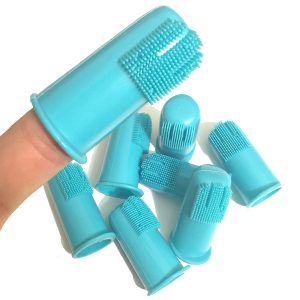
I’ve used these finger toothbrushes in the past but switched away from them because I felt like they didn’t stay on my finger very well. They seemed to get knocked off by my dogs’ tongues very easily, which left me with just my finger in their mouth.
#3 Fomate Double-Sided Soft Silicone Toothbrush
Most reviews on this soft silicone toothbrush are people saying they love the difference between this and the normal bristled toothbrush. Many people commented that this option is best suited for larger dogs, simply due to the surface area of the brush head.
Not only are these three of the best-sellers, but they also showcase the variety of different types of brushes available for your pup.
Again, try out a couple different ones and see which ones you, and of course your pup, like most!
WHAT IS THE BEST DOG TOOTHPASTE?

Similar to a dog toothbrush, finding the best dog toothpaste takes some testing. Be sure to try out a few options and see what your pup responds best to. Sometimes even a highly-rated toothpaste might be disliked by your pup.
Be sure you choose a toothpaste that is specifically formulated for dogs and not humans. Many human kinds of toothpaste have xylitol which is toxic to pups.
The one all three of my dogs have loved is this poultry flavored toothpaste from Petrodex. You can get it here.
HOW TO REMOVE PLAQUE FROM DOG'S TEETH?
Removing plaque from dog’s teeth often means paying for expensive dental care from your vet. If large amounts of plaque have built up on your doggo’s teeth, this might be your only route to really remove plaque.
Simply put, prevention is the best medicine on this one!
If your pup is just starting to show signs of plaque, now is the best time to start a good habit of brushing your dog’s teeth. Brushing your dog’s teeth is the best way to avoid plaque build-up in their teeth. Commit to brushing your pup’s teeth once a day and you probably avoid plaque all together!
Other methods include teeth cleaning toys, gels for teeth cleaning and removal, and teeth cleaning chews. Again, expect the best results by consistently brushing your dog’s teeth!
🐶 Don't miss out, get access to the Dog First Aid Course part of Pupford Academy Plus. Get access here! 🐶
HOW TO CLIP DOG'S NAILS
Maintaining healthy nails helps avoid more serious feet and nail problems in the future. Although many dogs naturally grind down their nails from walking on sidewalks, going on hikes, etc. it’s still important to monitor the length of your pups nails.
A simple rule of thumb is that your dog’s nails should not curl over their paw and touch the ground when standing on all fours. Another sign your dog’s nails are too long is if they make a “clacking” noise when they walk on tile, hard floors, or concrete.
To cut your dog’s nails, you’ll want to get a specific pair of dog nail clippers. This will help to ensure that you don’t hurt your pup’s nails or feet in the trimming process. I’ve personally used this nail clipper and have found it easy to use, safe, and reliably sharp for cutting my fur-babies’ nails when needed.
When clipping your dog’s nails, be sure you don’t cut into your dog’s “quick” (see below). Here is a simple breakdown of what your dog’s nail is made up of.
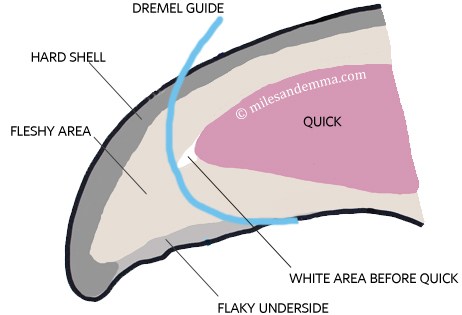
When cutting the nail, start with removing less of the nail if you are unsure exactly where your dog’s quick begins (especially for dogs with dark nails). If you happen to accidently cut into your pup’s quick and bleeding occurs, watch what to do here.
HOW TO CUT YOUR DOG'S NAILS SAFELY
Step 1: Do your best to ensure your dog feels safe and comfortable. Sometimes giving them a spoonful of peanut butter, a chew toy, or a nice treat can help distract them from the task at hand. (exercise beforehand will help as well!)
Step 2: Get your dog to either stand on all fours or to lay down on their side.
Step 3: Grab and hold one paw with your non-dominant hand (or have someone help you) as you put the clipper (with your dominant hand) on the nail of your dog.
Step 4: Identify where your dog’s quick starts, and go slightly away from that with your clippers and cut the nail.
Step 5: Repeat for all nails, including the dewclaw.
Reminder: Start by cutting LESS and making multiple cuts, rather than cutting the nail too short.
Cutting your dog’s nails should be a regular part of their grooming and health schedule. The more you keep up with it, the more used to it your pup will become and the simpler the task will be. So, make yourself a reminder in your phone to trim your dog’s nails at least once a month.
If you don’t feel comfortable doing it, most grooming facilities offer nail trimming services.
Related Full Article: How to Trim Dog Nails
HOW TO CLIP DOG NAILS WHEN DOG IS SCARED OF IT
The best way to avoid your dog being scared of getting their nails trimmed is to start this habit at a young age. If from the puppy stage you start trimming your dog’s nails, they will likely feel more comfortable with the process and not be as scared. As you introduce nail trimming at a young age, be sure to do so slowly and in a way your pup will be comfortable. Here are some steps you can follow.
- Just let them see the clippers and sniff them and reward them for being calm around the clippers.
- The next day (or once they seem comfortable around the new tool) just touch their paw/nail with the clippers but don't actually clip. Reward them for being calm as the clipper comes in contact with their paw.
- Once they are more acquainted with the clipper, do a clip or two and reward as your dog is calm.
- Finally, work your way up to a full clipping session. Be sure to reward as your pup goes through this :)
Think of these "acquaintance sessions" as mini training sessions. Just like with any type of new skill or behavior, your pup may need time to warm up to this new situation! For more training tips, be sure to sign up for our free online dog training class led by Zak George.
Another tip is to do your absolute best to avoid ever cutting into your dog’s quick. This pain and discomfort will almost certainly make cutting their nails the next time a difficult endeavor.
If your dog is scared of getting their nails clipped there are a few things you can do to make them feel more comfortable.
One tip is to cut your dog’s nails after a long walk, game of fetch or playing tug-o-war. Basically, you want your dog’s energy levels to be as low as possible.
Another way to calm your dog in preparation for getting their nails cut is to give them a Kong with peanut butter, a nice bone or treat, or having someone else help you to soothe and pet your pup while you cut their nails.
If you try all of these and your dog still won’t calm down enough to let you cut their nails, you may need to try taking them to a grooming facility.
Don’t force the issue too much and traumatize your dog.
🐶 Don't miss out, get access to the Dog First Aid Course part of Pupford Academy Plus. Get access here! 🐶
TIPS FOR BATHING YOUR DOG
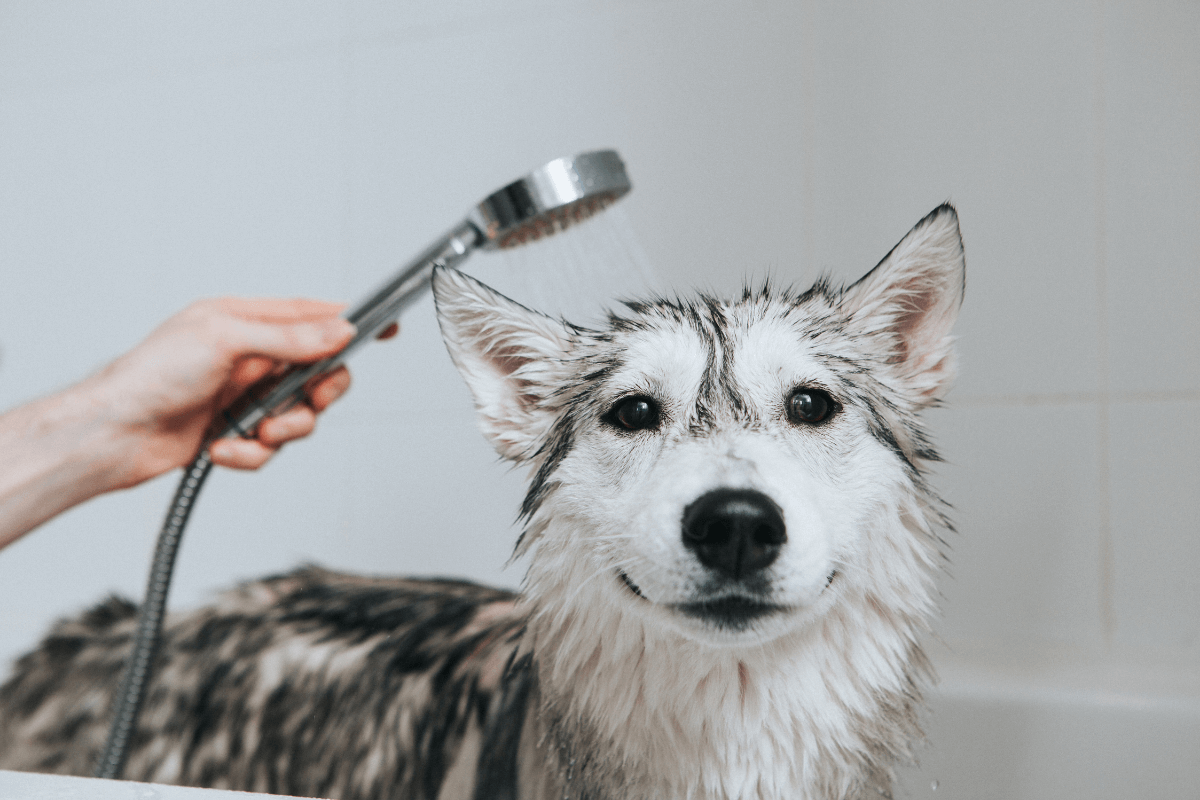
I still remember as a kid going to a friend’s house who had a little chihuahua. That chihuahua almost always smelt like… well, urine. It was dreadful.
That’s a terribly vivid memory.
Don’t be the type of dog owner that gives young kids traumatic experiences because of your bad smelling pup.
The best tip I can think of for making bathing your dog easy is to teach them the “stand stay” command. If you can get your dog to stand on all fours and stay until you tell them they can move, bath time will feel like a breeze.
Need help with that? Don’t worry, we offer a free online training that covers stand and stay! Seriously, it’s free. Sign up here. (It takes place on day 4 of the training)
For more grooming tips for your dog, check out our At Home Grooming Course so you can learn how t o safely and effectively groom your dog at home.
*Important* Only use dog shampoo on your pup, never human shampoo. Dog’s skin and coat are much different from yours and mine, so they need a shampoo made specifically for them.
Related Reading: How to Bathe a Dog That Hates Baths
HOW OFTEN SHOULD YOU WASH YOUR DOG?
Depending on your dog’s breed, coat length, and habits (ie swimming in lakes/ponds, running on dirt, etc.) you will want to bathe or groom your dog every 3-6 weeks. If it gets to the point that you can smell your dog when he or she walks in, then it’s for sure time to give your little buddy a bath.
Most dog’s skin (as long as you choose a dog-friendly shampoo) can handle being bathed quite often. Even then, avoid bathing your dog more than once a week so don’t risk drying out their skin. If you are going to bathe your dog once a week or so be sure to get a shampoo that soothes itchy skin, kills bacteria, and even helps heal sores.
One thing that has been an absolute must-have for our baths at home is a wand-type shower head. Being able to put our dogs in the bath and use the wand to get underneath and around them makes our bath time much more effective.
If you have an especially large dog, you can set up an outdoor bathing station (with your hose) or try out a self-serve dog wash if your area has one.
HOW OFTEN SHOULD YOU WASH YOUR PUPPY?
Similar to adult dogs, you don’t need to wash your puppy more than once a week. A good cadence is to wash every 3-6 weeks. You will find out what works best for your pup over time.
Just remember that coat length, time of year, breed and how much they are outside will all factor into how often you should wash your puppy.
AT WHAT AGE CAN YOU WASH YOUR PUPPY?
Most puppies don’t get very dirty (when they are very young) so they don’t need to be bathed. You should wait until your puppy is three months old, unless it’s seriously needed at an earlier age.
Learn all about dry shampoo for dogs to keep your pup smelling fresh and clean in between baths.
Related Reading: How to Clean a Puppy Without Bathing
HOW OFTEN SHOULD I GROOM MY DOG?
How often you need to groom your dog will vary depending on your dog’s hair type, breed, and other factors. Typically, you will want to groom your dog about once a month.
Choosing a professional groomer is often the best choice as they know the ins and outs of caring for your dog’s skin and coat. Most grooming services will provide additional services like cleaning ears, clipping nails, etc.
HOW OFTEN SHOULD I BRUSH MY DOG?
Whether you have a short or long haired dog, brushing them frequently can help with shedding, matting, and other coat issues. It’s best to comb your dog’s hair at least once a week.
For short hair dogs, brushing them more often can help reduce the amount of shedding in your home (I have two Yellow Labs, and the shedding can get out of control). Use a comb that is made specifically for dogs, and more specifically for your dog’s hair and coat type.
Again, getting your dog to perform a “stand-stay” will be very beneficial as you comb them.
DOG HEALTH TIPS OVERVIEW AND RECAP

Being a dog parent is like nothing else, but it also takes a bit of work and effort to keep your four-legged friend healthy and happy. Taking care of your dog isn't just about nutrition, exercise, and training. So, don’t forget to do the little things! Here’s a quick recap of some dog health tips:
- Take your doggo to the vet regularly and consider getting pet insurance
- Brush your dog’s teeth every day with dog-specific toothpaste
- Buy a dog nail clipper and don’t let your dog’s nails get too long
- Bathe your dog about once a month with dog shampoo
- See a professional groomer about once a month (depending on breed)
- Brush or comb your dog at least once a week
- LOVE your pup
These simple health habits will save you money in the long run. It’s worth establishing a routine and sticking to it. Not only will your pup be happier and healthier, but you’ll have a better relationship with your pup.
If you want to learn more about things like exercise, nutrition, and training, you can read the following to learn more about those topics.
Pupford Academy Plus includes courses like Trick Training, Crate Training, and Potty Training, among many others. Our At Home Grooming Course, part of Pupford Academy, will also help you with all things grooming and hygiene. AND you'll get access to a Dog First Aid course taught by a veterinarian! Access Pupford Academy Plus here!
🐶 Don't miss out, get access to the Dog First Aid Course part of Pupford Academy Plus. Get access here! 🐶
Before you go... check out our fun poll below!
0 Comments